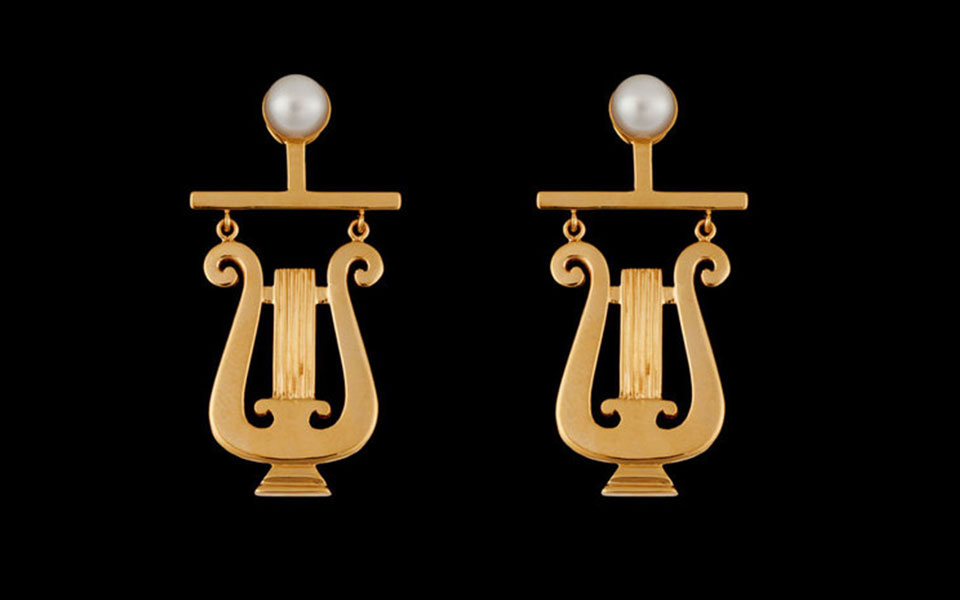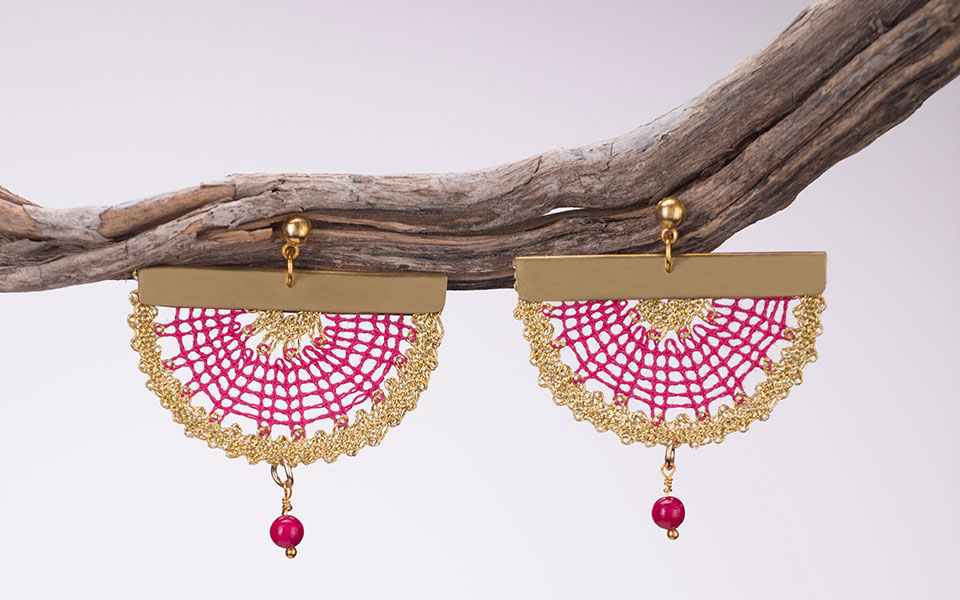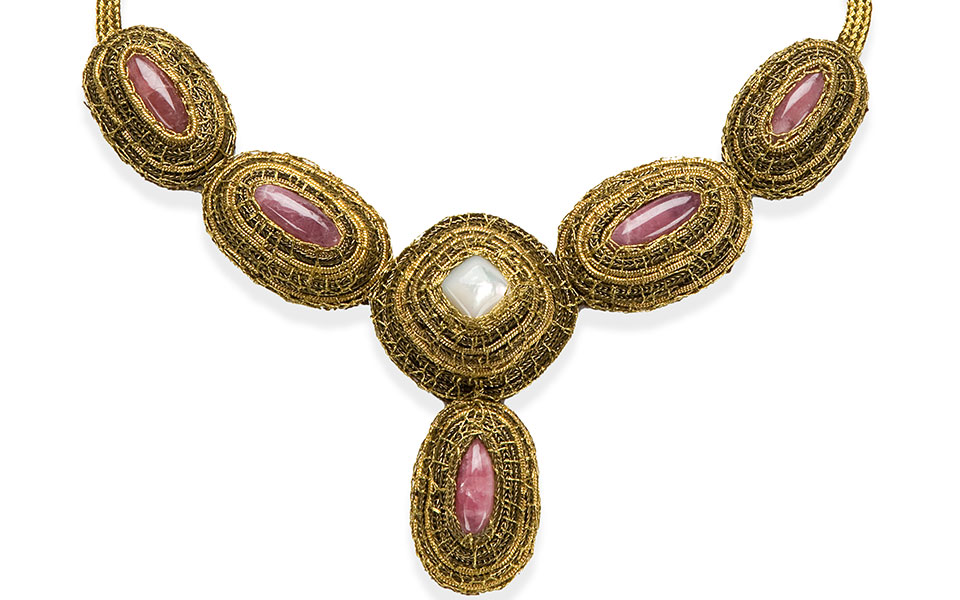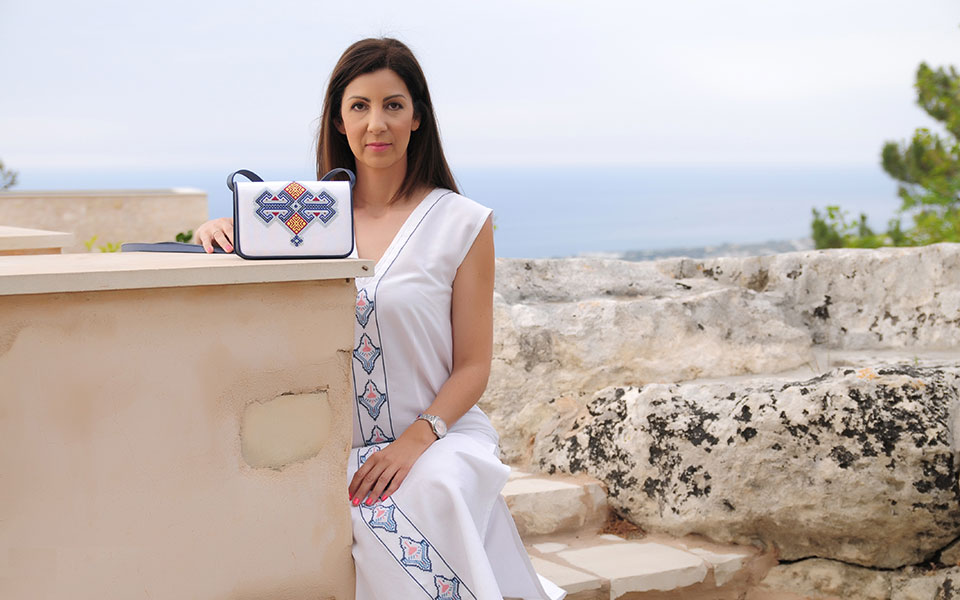If you’re visiting Crete, chances are you’ll come across several of the island’s most significant historical figures and monuments splashed across T-shirts and gracing a whole range of other mementos as well. After all, drawing from one’s history is a long-standing tradition in countries like Greece, home to colorful myths and fables. In any case, the notion of creative referencing in the world of fashion and design is no longer a novelty, as designers today often borrow elements from various cultures in their efforts to add substance to their moodboards.
For certain designers, however, cultural influences can be innate – if not “inside,” at least “around” them. This is the case of the fashion and jewelry designers featured below: whether natives, frequent visitors or “transplanted” Cretans, they filter their ties to the island through a distinct identity which reflects their own vision. Their aim? To reinvent the past while looking firmly at the future.
KLOTHO
Minoan frescoes and old Cretan weaving motifs are transformed into contemporary patterns on the loom at Klotho, the Rethymno-based apparel and accessories brand established by Alexandra Theohari in 2016. Born and raised in the northern city of Thessaloniki, Theohari grew up treasuring handwoven pieces made by her Cretan grandmother, a weaver. She studied fashion design and art history before moving to Crete, where a visit to the workshop of Aghia Irini Monastery in Rethymno led her down a novel path. The revival of ancient techniques at Klotho, says Theohari, aims to bring “handwoven textiles back to fashion as it is at present.” Meanwhile, Crete continues to be a source of inspiration. “The landscape changes all the time,” she says. “People are hospitable, the energy is positive and there is a wealth of history, culture, art and crafts.”

SOPHIA KOKOSALAKI
Sophia Kokosalaki has spent the last 20 years reinterpreting key figures of the Minoan civilization, including the voluptuous Snake Goddess. The Athens-born, London-based designer, whose parents are both Cretans, visits the island every year. “When your images stem from Crete’s wild, rugged beauty and the role models and standards shaping your life are rooted in its history, you don’t really expect to turn out any other way, do you?” asks the designer who made her mark in the global fashion arena through the frequent use of draped garments, bringing together her Greek heritage with a clear contemporary vision reaching beyond seasonal trends. After establishing her namesake brand, and following design stints at Diesel Black Gold and Madeleine Vionnet, Kokosalaki recently turned her focus to jewelry. Her demi-fine pieces, available from brick-and-mortar and online outlets, include motifs such as Cretan hooks and rams.

ARIADNE’S THREAD
A 400-year-old technique for creating handmade lace led the husband-and-wife team of Nikitas Almpanis and Akanksha Sharma to found Ariadne’s Thread, a fashion brand firmly rooted in Cretan tradition. Almpanis, an Irakleio native, and Indian-born Sharma met as students in the UK before moving to the Cretan capital in 2012. This is where Sharma, a designer specializing in traditional Indian textiles, came across the laborious lace-making technique of kopaneli. “India has so much to offer, but I’d never seen anything like kopaneli before, and young Greeks don’t know about it,” says Sharma. Ariadne’s Thread hopes to change this. “Our aim is not to make it too contemporary, resulting in a loss of identity, but to inspire the young to find out more about it.” Garments are available by special order, while jewelry is featured in local outlets and online.

VOULA KARAMPATZAKI
Vivid childhood memories of examining bridal trousseaux at Cretan village weddings and of observing elaborate Easter rituals, including the making of flower arrangements for the Greek Orthodox Epitafios procession on Good Friday, laid the foundations for Voula Karampatzaki’s creative universe. Born in Ierapetra, Crete, the designer studied goldsmithery and textile conservation before developing her own brand of handmade pieces: jewelry items that frequently resemble pieces of fabric or embroideries, and that incorporate references to local stories and myths. “I tied my studies to the powerful images I grew up with, and I’m constantly in the process of learning more about women in Greek mythology, such as priestesses and princesses, starting from the Minoan civilization,” notes the designer, who often works with fibers, stones and golden threads. Karampatzaki is currently based in Athens, while her intricate jewelry is on display at museums and in galleries around Greece.












